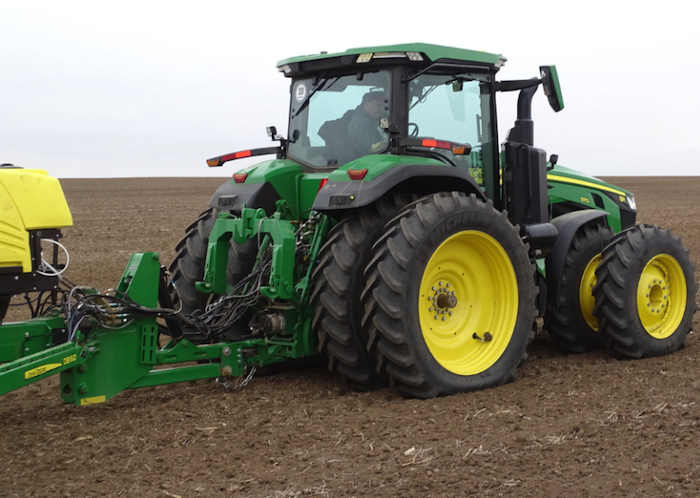In this blog, Ag Tire Talk asks the major tire manufacturers why producers are hesitant to run ag tires at recommended in-field single digit PSIs, what is required to do so, what precautions must be taken, and how to improve traction and flotation.
David Graden from Michelin Agriculture says:
Accustomed to Running Higher PSIs
“In my experience, almost 9 times out of 10, producers are very reluctant to reduce their Ag tire pressures to recommended, single digit, operational pressures. In most cases, I believe this is due to their historic experience running higher pressures, or even the maximum pressure stamped on the sidewall of the tire.”
Jason Zaroor from Pressure Pro says:
Tire Damage Concern
“I believe that producers are hesitant to run AG tires at the recommended single-digit PSI for fear that they’ll cause damage to the tire...”
Greg Gilland from Maxam Tire International says:
Lowest Safe Field Air Pressure = Best Yield
“Ag tires need to operate at the lowest air pressure possible to reduce the effect of the machine weight on the soil, decreasing the ground pressure and soil compaction…improving growers’ yields.”
Chris Neidert from Yokohama TWS says:
Reducing Air Pressure Lengthens Tire Footprint
“As we reduce air pressure the footprint increases not only in width but also in LENGTH.”
Dave Paulk from BKT says:
Road & Field Air Pressures Differ
“There are also perils to running low inflation pressures in the field and once out of the field. 9 psi in the field at 5-10 mph does not equal 9 psi on the road at 30 mph. Once out of the field and on the road, air pressures must be increased to handle the weight at road speed.”
Ken Brodbeck from Precision Inflation Systems says:
CTIS Required to Optimize Field & Road PSI
“Can the operator MAINTAIN the minimum psi? The answer is no, unless they adjust the pressure for temperature, speed and axle load changes at every field and road change using a Central Tire Inflation System!”
Blaine Cox from Yokohama Off-Highway Tires America says:
Duals & Triples ONLY Rated for Single Digit PSIs
“Inflation pressures on our VF tires start at 12 psi, which is consistent with the Tire and Rim Association (TRA) load tables. TRA only recommends going into the single digits, a minimum of 6 psi, on dual or triple configurations.”
Ross Ormsby from Doran says:
TPMS Ensure Air Pressure Accuracy
“Producers can be confident their tires are at the correct inflation pressure as our TPMS is accurate within +/- 1 PSI.”
David Graden from Michelin Agriculture says:
Air Pressure Must be Increased on Slopes
“When a producer operates in a field(s) with slopes at +20% grade or more, safety and stability become a concern. If tires are not properly inflated, they may not be able to withstand the added weight and lateral stability and become compromised. For a +20% grade, your machine weight will transfer about 30% to one side. For this reason, we publish a standard recommendation of +6psi. As the slope gets more severe and the weight shift reaches 35% to 45%, we highly recommend consultation with the tire manufacturer for air pressure recommendations and corrections.”Related Content
Ag Tire Talk Blog: The Rule of Thumb for Ag Tire Replacement,
Ag Tire Talk: Reducing Fuel Costs with Tire Tactics,
Steep Slope Ag Tire Adjustments






Post a comment
Report Abusive Comment